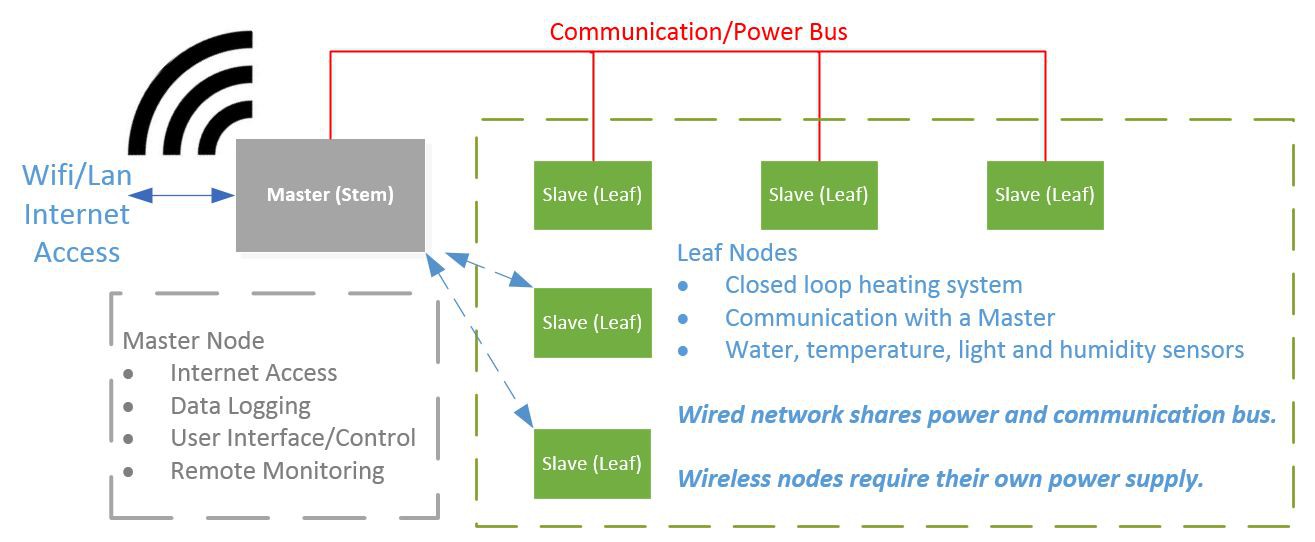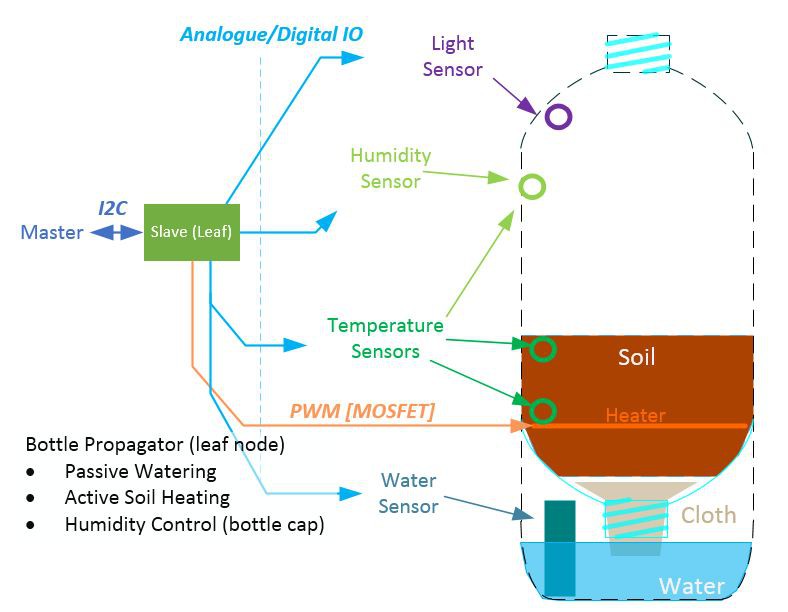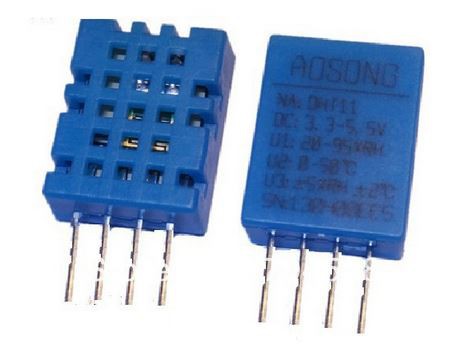System Overview
Leaf Nodes
The leaf nodes will have several capabilities:
- Air, Soil and Humidity Sensing
- Temperature regulation
- Water level monitoring
- Light sensing
- Slaves on a larger network for logging
In addition It would be nice to have the option of a single node and a way to configure it to keep associated costs low.
Air temperature and humidity
For the air temperature and humidity I will use a digital sensor, either the DHT11 or DHT22. The DHT22 is more accurate but costs nearly 4 times as much! Considering they have a nearly identical interface they could end up being interchangeable on a node to node basis.
Soil Temperature
In order to take the soil temperature I will use something similar to the TMP36 already used in some of my testing and place just under the surface of the soil.
Temperature Regulation
Temperature regulation will be done using a closed loop system using soil temperature and heater temperature as feedback mechanisms. In order to raise the temperature of the soil a few main options were considered, heating cable, nichrome wire, PCB. Some examples:
Heating Cable
Ni-chrome Wire
PCB
I have picked a PCB heater at this stage because of the ability to get them manufactured at low cost at many Chinese board houses in arbitrary shapes with insulation (solder mask). The next iteration of the PCB heater will be circular, woo!
Water Level Monitoring
To monitor the water level there are several options available including but not limited to, mechanical switches, pressure sensors, capacitive and resistive. Mechanical switches and specialized pressure sensors tend to be expensive large or both. I am planning oh making a simple PCB that will be able to determine first whether water is present or not and later attempt to distinguish levels. After all the main point of a water level monitor is to alert the user to a thirsty plant.
Light Sensing
Light sensing could be implemented with a Light Dependent Resistor (LDR), photo transistor, photo diode/solar cell. The advantage of a LDR is they're cheap and widely available, probably my first choice. Unfortunately LDRs aren't very consistent and can be a pain to get any meaningful data besides relative light intensity.
Better light sensors are available and are accurate with a digital output for minimal additional components, but come at a higher cost, potentially a good idea to have one per propagator cluster.
Brains
In order to do all these measuring and communication tasks a micro controller will be needed per node and must be able to support several ADC, digital I/O pins and I2C communication as a slave. An Arduino would be ideal to help people get to grips with the system and repurpose it as they see fit.
 Darren Blaxcell, aka Pork
Darren Blaxcell, aka Pork

